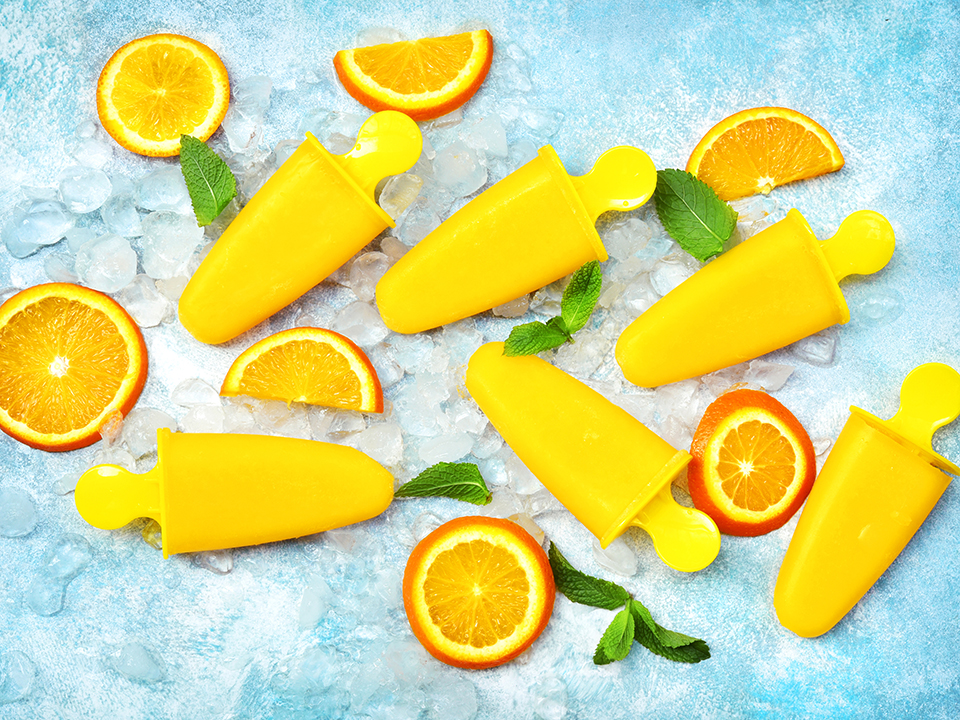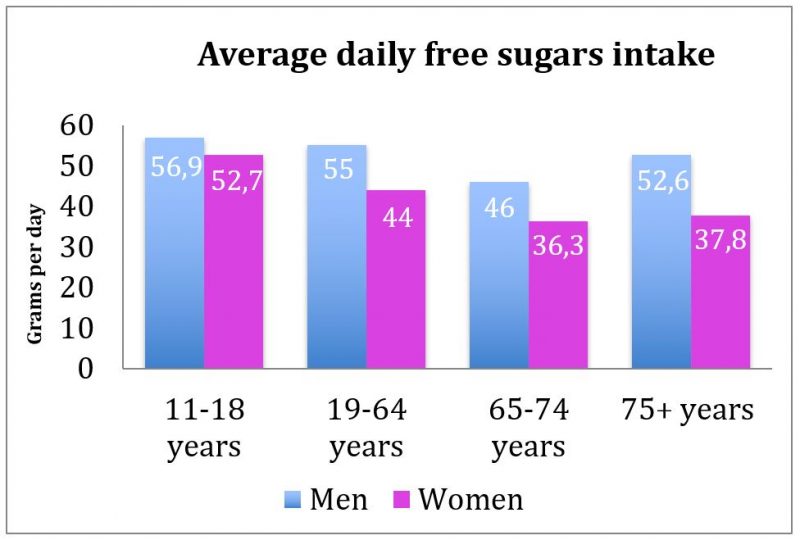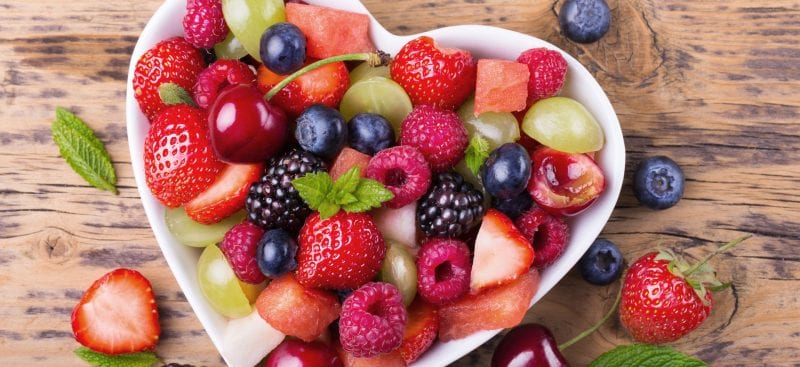Let’s talk about sugar: Why we need to cut down on excess sugars in our diet
Most of us know that cutting down on sugar in our diet is a good idea, but with large amounts of sugar in so many of the foods and drinks that we like to enjoy on a daily basis, and so much conflicting advice about the types of sugar we need to limit, it’s no wonder many of us are confused. Are all sugars bad? What exactly are free sugars and how do they affect our health? Can we still enjoy a glass of orange juice with our Benecol® spread on toast? And should we swap sugar for a drizzle of honey over our morning porridge?

We at Benecol® want to clear up the confusion over the different types of sugars, so you can make healthier choices and stay within sugar recommendations, whilst continuing to enjoy your sweet life. Here’s all you need to know about sugar…
What is sugar?
Put simply, sugar is a sweet-tasting, simple carbohydrate and is, therefore a source of energy. Most of us think of it as the granulated sugar found in our sugar bowl (aka sucrose), but it comes in many guises. And despite what you may have heard, it’s impossible to completely ‘cut out’ sugar and go ‘sugar free’ because sugars are in nutritious foods too! There’s lactose and galactose (found in milk and dairy products like yogurt), glucose and fructose (found in fruits, vegetables and honey) and maltose (found in malted drinks).
To help us better understand the sugars in our diet, the World Health Organization separates them into three main groups – intrinsic sugars, which are those, incorporated within the structure of intact fruit and vegetables; sugars naturally present in milk and dairy products; and added free sugars. (Ref 1)
The different types of sugar
The ones we can enjoy…
Intrinsic sugars
- These are sugars naturally locked in to the structure of whole fruits and vegetables (fresh, frozen, stewed, dried and canned (with no added sugars), and including beans and pulses), and also cereal grains, nuts and seeds (Ref 1,2). They’re surrounded by a plant cell wall, which must be broken down first before our body can make use of them – so intrinsic sugars are digested more slowly, which makes for better blood sugar (glucose) control.
- Foods high in intrinsic sugars, such as fruits, vegetables and bread, actually form an important part of a heart healthy and balanced diet, providing wholegrains and fibre to help fill us up, including water to top up our fluid intakes and unsaturated fats to help maintain healthy cholesterol levels. Many of them also include valuable vitamins and minerals for our health.
Sugars naturally present in milk and dairy foods.
- Apart lactose intolerance, there is no need to worry about the natural milk sugars found in yogurt, cheese, and other dairy-based drinks, as there’s no evidence to suggest any negative effects on our health (Ref 1). In fact, they are generally good for us, bringing with them extra nutrients, such as calcium for healthy teeth and bones. If you have been diagnosed with lactose intolerance, there are also many lactose free options available which help you include the benefits of dairy in your diet.
The ones we need to cut down on…
Free sugars
- Free sugars are all sugars added to foods and drinks in any form, whether added by you in homemade dishes, by a chef in a restaurant or by a food manufacturer, plus any sugars naturally present in honey, syrups (such a maple, golden and agave) and nectars (such a blossom) (Ref 2, 3). Free sugars are typically digested more quickly and they do not offer the nutritional and health benefits associated with foods made up predominately of naturally occurring sugars.
What about the sugars in fruit juice?
This is where things can get a little tricky – whilst sugars found in whole fruit and vegetables are NOT free sugars, unsweetened fruit and vegetable juices and smoothes, as well as concentrates, purees, powders and pastes DO count as free sugars, so you need to watch your portion size. The reason? When fruit and veg are processed, the plant cell walls are broken down and the sugars are freed.
Juices and whole fruit and vegetables also differ in the amount of fibre they contain – some of the filling fibre is lost when the fruit or vegetable is juiced, so it’s far easier to drink larger amounts of fruit juice, and in turn free sugars (and calories), without realising it. Just think how much longer it would take for you to eat the number of whole apples that go into making a small glass of apple juice (Ref 4, 5)!
Don’t sugar coat it. Why should we be cutting down on free sugars?
Free sugars provide little more than calories, so are not necessary for a healthy diet. And whilst a spoonful of sugar here and there may seem relatively harmless, it soon adds up and can be detrimental to our health – especially when it comes to our waistlines (Ref 1,2).
“All sugars, whether naturally occurring or free sugars, provide 4 calories a gram, which is around 16 calories a teaspoon.”
Many foods and drinks that are high in free sugars tend to be high in calories, particularly if the portion sizes are large – so by regularly eating and drinking them to excess, you can easily consume more calories than you need, which can lead to weight gain and obesity. And as a result, this raises your risk of heart disease and other conditions, like Type 2 diabetes too (Ref 1,2,7).
Lots of free sugar rich-foods also come packaged with large amounts of fat, especially saturates – and that’s not great news for managing your cholesterol levels either.
There is also the risk to your dental health to consider – consuming too many foods and drinks high in free sugars, and too often, also increases your risk of tooth decay. (Ref 1,2)
So, how much free sugar should I be having?
It’s recommended that free sugars should provide no more than 5% of our daily calories –roughly equivalent to no more than 30g of free sugars (or 7 sugar cubes) a day for adults, and children aged over 11 years (see table 1 below, for more details) (Ref 3).
Table 1
| What are the free sugars daily limits? – 5% of our daily calories | ||
| Age | Grams of free sugars | Equivalent in sugar cubes |
| Children 4 – 6 years | ≤ 19g free sugars | ~ 5 sugar cubes |
| Children 7 – 10 years | ≤24g free sugars | ~ 6 sugar cubes
|
| Adults & children 11+ years | ≤ 30g free sugars | ~ 7 sugar cubes |
This may sound a lot, but when you start to look at how much is found in everyday foods and drinks, this daily free sugars allowance is soon used up. For example, a tablespoon (15g) of jam contains 8g of free sugars, a standard milk chocolate bar (45g) contains 25g of free sugars, and a can (330ml) of cola contains 35g of free sugars – which is your entire daily limit in one drink.
It’s no wonder therefore, that we’re still a along way off achieving free sugars targets – only 13% (one in eight) UK adults currently meet this 5% recommendation (Ref 8). In fact, according to recent national dietary surveys, the average Brit (aged 19-64 years) is consuming just over a third more than recommended, at 49.7 grams per day. And older generations are not fairing much better, at 44.1g for the over 75s (see table 2 below, for more details) (Ref 9).
Table 2

Source: PHE. National Diet and Nutrition Survey Rolling programme Years 9 to 11 (2016/17 – 2018/19)
Where are all of these free sugars coming from?
It’s traditional sugary foods that provide most of our free sugars – table sugar, jams and sweet spreads, sugars-sweetened drinks, chocolate, buns, cakes, pastries and fruit pies, biscuits and fruit juice. These provide around 53% of the free sugars in UK adults’ diets (see table 3, for more details) (Ref 9). But free sugars are also added to many savoury products like sauces, bread, ready-meals, pickles and even condiments, for taste.
“Did you know that the average British adult drinks 9% 0f their daily free sugars from alcohol?”
Table 3
| Foods and drinks that make the biggest contribution to UK adult’s daily ‘free’ sugars intake. | |
| Percentage contribution of free sugars | Type of food and drink |
| 14% | Table sugar, preserves and sweet spreads |
| 10% | Soft drinks, not low calorie |
| 9% | Alcohol |
| 8% | Chocolate confectionary |
| 8% | Buns, cakes, pastries, fruit pies |
| 7% | Biscuits |
| 6% | Fruit Juice |
| 4% | Breakfast cereals |
| 4% | Savoury sauces, pickles, gravies, and condiments |
| 4% | Yogurt, fromage frais and other dairy desserts |
| 2% | Sugar confectionary/sweets |
| 2% | Ice cream |
| 2% | Puddings |
Source: PHE. National Diet and Nutrition Survey Rolling programme Years 9 to 11 (2016/17 – 2018/19)
Become a ‘food label detective’
Food labels in the UK currently display the total sugars content only, so you can’t tell how much of the sugar is coming from harmful free sugars. This is OK for sweet tasting foods and drinks, which most of us know contain a lot of free sugars, such as sugary drinks, sweets, chocolate, ice cream and puddings. But many of the products we consume contain a mixture of free and naturally occurring, intrinsic sugars.
For example, a breakfast muesli will contain intrinsic sugars from the dried fruit, nuts and seeds, wholegrain wheat or rolled oats, but may have some added free sugars, for extra flavour too. A jar of tomato-based pasta sauce will have naturally occurring, structurally intact sugars from the tomatoes from which it is made, and may have some added sugar too, to counteract the acidity of the tomatoes.
Get free sugars savvy
If you want to keep your free sugars at bay, the ingredients list is a good place to start, as any sugars added to a food and drink must be included in the ingredients list (by law). But you’ll still need to become a ‘sugar detective’, as it’s not always easy to spot free sugars in the ingredients lists. Why? This is because they’re listed under many different names.
Below are some common names of free sugars lurking in the ingredients lists on foods and drinks – ingredients are listed in descending order of weight, so the higher up the list they are, the more free sugars will be in a product.
| Common names of free sugars added to foods and drinks | ||
| Agave nectar/agave syrup | Dextrose | Malt sugar/malt syrup |
| Barley malt syrup | Fructose | Maltose |
| Beet sugar | Fruit juice concentrate, puree/pastes/powder | Maple sugar/maple syrup |
| Blackstrap molasses | Galactose | Molasses |
| Brown rice syrup | Glucose | Organic sugar |
| Brown sugar | Glucose fructose syrup | Palm sugar |
| Cane sugar/cane juice | Golden caster sugar | Raw sugar |
| Caramel | Golden syrup | Rice syrup |
| Carob syrup | Grape sugar | Sucrose |
| Coconut sugar/coconut blossom nectar | Honey | Sugar |
| Corn sugar/corn syrup | Icing sugar | Sugar beet syrup |
| Date sugar/date syrup | Invert syrup | Treacle |
Even if a product contains free sugars, it’s still difficult to work out an actual quantity. So until food labelling laws change to include a value for free sugars on nutrition labels, it’s best if you can avoid processed foods and drinks with a high sugar content. These are:
- Foods with more than 22.5g sugar per 100g;
Drinks with more than 11.25g per 100ml (Ref 10)
The low-down on sugar labelling
As well nutrition panels on the back and side of packaging, which give values for total sugars per 100g and sometimes per portion – under a single heading ‘Carbohydrate – of which sugars’, some products include extra information to help us make healthier choices. Here’s what some of the information means (Ref 10).
- Reference Intake – Many food manufacturers including Benecol® now highlight the sugars content per serving, and as a percentage of an adults’ Reference Intake, or % RI on the front of the packaging – see an example below. RIs are guidelines for the amount of particular nutrients (fat, saturates, sugars and salt) and energy (8400 kJ/2000 kcals) an average adult should have each day. Pay attention that the RI is for total sugars (90g a day), which includes the natural sugars you’ll find in dairy ingredients, fruit and vegetables, as well as 30g 0f free sugars.
- Low sugar – foods must contain less than 5g sugar per 100g, and liquids less than 2.5g sugar per 100ml. These are the same benchmarks that need to be met to get a green traffic light on the front of the packaging, too.
- Sugar Free – products must contain no more than 0.5g sugars per 100g or per 100ml. Products that meet these requirements may also include a green traffic light on the front of packaging.
- No added sugar –products that only make this claim when no sugars have been added for sweetening properties. If sugars are naturally present in the food, the product can also use ‘contains naturally occurring sugars’ on the food label.
- Reduced sugars – the food must contain 30% less sugar than a similar standard product. Often used on products that are normally quite high in sugars, it does not necessarily mean the product is low in free sugars. These products too must be consumed in moderation to avoid excess sugar intake.
- Light or Lite – products that make this claim have to follow the same rules as ‘reduced’ and must outline the characteristics.
How to cut down on sugar?
Lifelong healthy eating and living is about taking little decisions along the way that balance pleasure and moderation. Most of us want to enjoy a little sweetness in our lives, but if you’re looking to take steps towards cutting your free sugars intake – without compromising on taste, check out our suggestions below.
- Start small. Trying to tackle one area that is a significant contributor to your daily intake of free sugars, first. If this is sugar in your tea and coffee, reduce the amount gradually – one teaspoon at a time – until eventually you’ll enjoy the taste without or try out a sweetener. With every teaspoon, you’ll remove 4,g of free sugars from your daily diet and 16 kcals – a small change to your daily eating habits that can quickly add up to big changes.
- Choose lower-sugar yogurts. Swap sugary desserts and puds for a bowl of fresh fruit salad with no added sugar and fat free varieties of Greek and natural yogurt. And why not switch to Benecol® yogurts – choose between Strawberry&Cherry or Raspberry& Peach, low in sugar, bursting with fruit flavour and each pot also contains0g of plant stanols, proven to lower cholesterol in 2-3 weeks*.
- Watch the alcoholic drinks. Beer, lager and cider, on average, currently supply around 7% of adults’ free sugar intakes, with wine providing smaller quantities (2%) (Ref 9). So try to cut down on the amount of free sugars you’re consuming through alcohol by switching to low-or zero alcohol drinks, enjoying alcohol free days mid-week, alternating your alcoholic drinks with water, diet soft drinks and mixers, and downsizing your wine glass size too.
- Keep fruit juice to one small glass a day. Although fruit and vegetable juices, and smoothies do provide useful vitamins and minerals like vitamin C and potassium, keep an eye on your portion size to limit your free sugars and calorie intake. One small (150ml) glass of unsweetened fruit juice counts as 1 of your 5 a day – but only one, no matter how much you drink (Ref 5, 11).
- Limit your intake of sugar-sweetened drinks. Make water or lower fat milks your first and second drink of choice, and enjoy hot unsweetened tea and coffee, water with lemon slices, or herbal teas. Or if you fancy something sweet and refreshing, but don’t want any of those unwanted liquid calories from sugary drinks, opt for sugar-free, no added sugar fruit squash or diet drinks.
- Use spices for flavour without the added sugar. Try dusting cinnamon over your homemade popcorn; adding a pinch of ground cardamom to your freshly brewed coffee; a dash of mixed spice to your stewed apple or even grating a little fresh ginger into your morning porridge. A little extra flavour here and there can go a long way in bringing out the natural sweetness of fruit – especially sour fruits, such as gooseberries, whilst pleasing a sweet tooth.
- Get baking. Baking and cooking from scratch will ensure that you’re keeping free sugars to a minimum by controlling the ingredients. You can normally halve the sugar content by replacing sugar with mashed banana, apples and other fruits or by using a granulated sweetener. Look out for low sugar recipes, including our scones recipe.
- Read labels and be on the lookout for free sugars in the ingredient list. When shopping, check the ingredients list (as a basic rule of thumb – anything ending in ‘ose’ will be a sugar – glucose, fructose, maltose), compare nutrition labels and switch to an item that is marked low in sugar, no added sugar, reduced sugar or sugar-free.
- Snack wisely. Save your chocolate biscuits, muffins, doughnuts, buns, cakes and sweet pastries for a treat now and then, not an everyday indulgence. When hunger hits, try a small handful of unsalted nuts, seeds or dried fruit; a piece of fresh fruit; celery sticks filled with salsa; a couple of oatcakes topped with low-fat cream cheese or rye crispbreads with smashed avocado. Or if you like the occasional bake, go for scones, teacake or slice of fruit loaf instead, which tend to be lower in free sugars, saturates and calories.
- Don’t just focus on sugar, think about the whole food. Remember, while reducing free sugars in our diet is important when it comes to looking after our weight and our teeth, it’s not the sole thing we should be focusing on when it comes to looking after our health. Think about the whole food – what else does that food provide in the way of calories, protein, fat, saturates, salt, fibre, and vitamins and minerals? Remember, it’s the complete nutrition package, that’s important for our health and wellbeing.
* Plant stanol ester has been shown to lower cholesterol. High cholesterol is a risk factor in the development of coronary heart disease. The beneficial effect has been shown with a daily intake of 1.5

